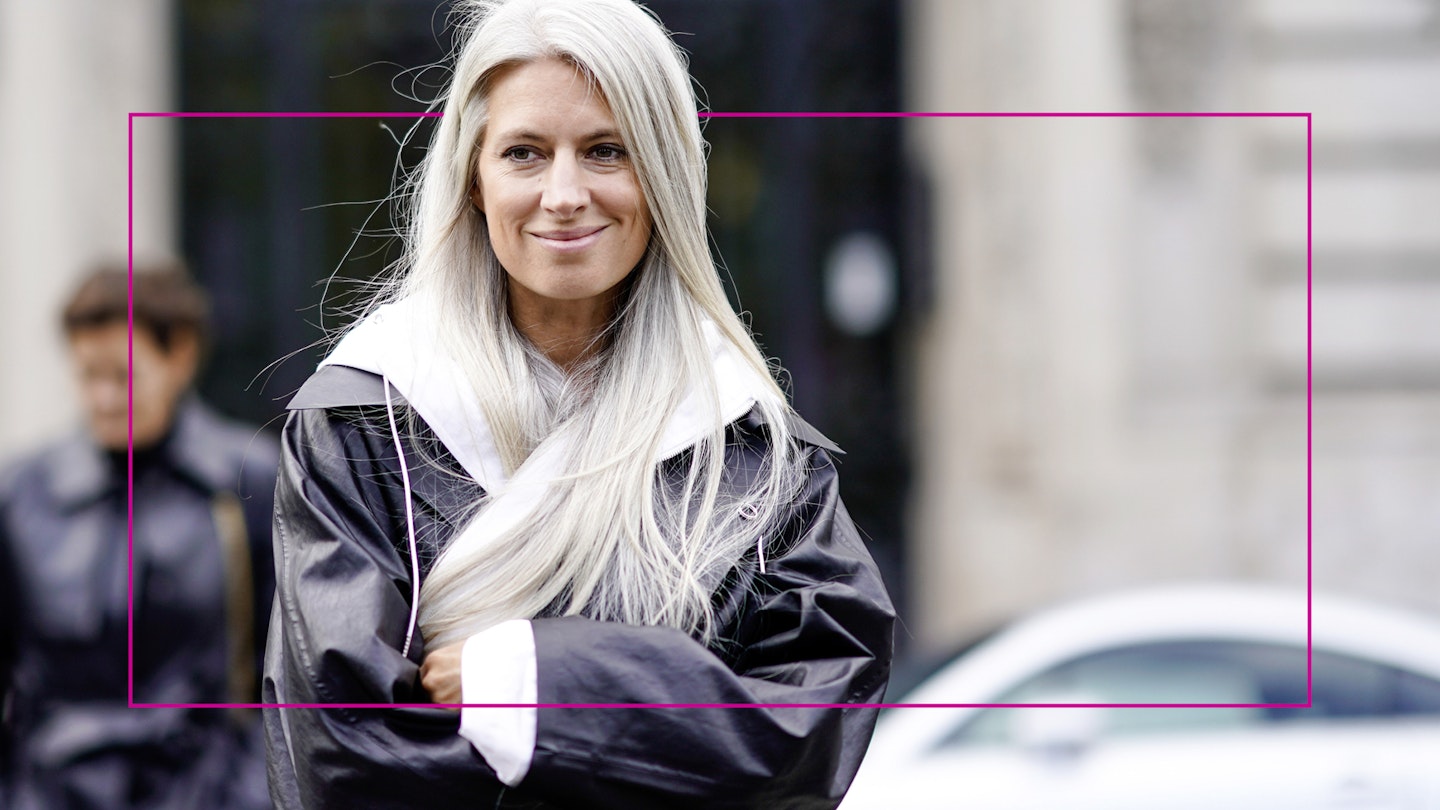I noticed my first grey hair when I was 19. ‘Look at this,’ I laughed, plucking it from my dark brown mane and showing my then-boyfriend. My smile faded when I saw the look of abject horror on his face. You’d have thought I had just produced a maggot from my head. During my twenties, I continued to find the odd grey, which I immediately pulled out. In my thirties, I started dyeing my hair – sporadically at first and, as the greys increased, it became a regular trip to the salon, every six weeks.
Now, 20 years after finding that first grey hair, I’m approaching my 40th birthday and wondering what the long-term solution is. Regular salon visits are expensive and time-consuming at the best of times (not to mention impossible right now), and grey roots on dark hair are exhaustingly high maintenance. But being brunette is such a big part of my identity, I don’t feel ready to embrace my greys.
People often tell me that I should let them grow out. ‘Look at Erin O’Connor,’ they say, ‘or Sarah Harris [pictured above].’ But those women have the God-given bone structure to make any hair look great. While I’m not unhappy with how I look, I’m very much a normal person with ‘normal person’ cheekbones. Also, I don’t have all-over white-grey hair like Sarah Harris. Judging by where my roots are, if I let my greys grow out, I would have a white streak at the front, and rogue strands throughout, which feels significantly less chic. The kicker is: a male friend once told me he thought women who let their hair go grey ‘just look like they’ve given up’.
As gender issues go, it may not be as important as – say – the pay gap or #MeToo, but it’s still infuriating that men are able carry off grey hair with the casual self-assurance of silver foxes like Ruffalo, Mourinho or Clooney. It’s absolutely not fair. Yet I don’t feel ready to take a stand for equality in such a personal way. To be completely frank, I don’t want to look like I’ve ‘given up’. So: what to do?
I ask legendary colourist Josh Wood what he would recommend for someone who doesn’t want to embrace the greys just yet, but would like to feel less self-conscious in the run-up to salon appointments. ‘I would advise to go a little lighter and warmer,’ he says. ‘If you don’t want to continuously be having a very obvious regrowth between the dark brown and the grey, the only option is to not make the dark brown so dark.’
I have tried balayage in recent years, because my natural hair colour is more sun-kissed towards the ends anyway. Undyed brunette hair has lighter strands, whereas dyed hair can look like an unnatural sheet of colour. Balayage certainly helps with that. However, it is not a lockdown solution. ‘It’s a pretty difficult technique to do in a sophisticated way,’ warns Josh. ‘You’re not going to be able to manage that yourself at home.’
The best way to deal with grey hairs is a conversation I have regularly with friends – although it seems less of an issue for blondes. ‘There’s no evidence that dark hair goes grey sooner,’ says Dr Jeni Thomas, Pantene’s principal scientist. ‘It’s just that the contrast of grey against brunette hair is more noticeable.’ Indeed, it’s a rare brunette for whom this is not an issue by her late thirties. But some of my friends haven’t yet started dyeing their hair because they don’t know where to start.
There will likely be six months where you might not like your hair as much. But, once it’s grown out, it will be worth it: healthy, pretty and flattering to your skin tone.
Hannah Phillips, owner of Bangs salon in east London, specialises in colouring hair to complement skin tone. She has worked her magic on stars including Jessie Ware, and at Fashion Weeks for the likes of Anya Hindmarch. ‘When the first greys appear, I recommend starting with a gloss, which is half-semi/half-permanent,’ she says. ‘It blends greys while conditioning the hair at the same time. It’s the ideal first step to colouring, and works so well when there isn’t a huge amount of grey. For anything over 50% of grey, though, it’s best to go straight to permanent, to guarantee coverage.’
However, she adds, that doesn’t necessarily mean dyeing all your hair one colour. In fact, leaving a few grey strands will look less obviously dyed. ‘It’s about managing it in a natural way, and avoiding having to visit the salon so regularly for a top-up. Colour doesn’t have to be painted on every single hair. I blend it through the areas with the most grey, and just get a light coverage. That way it looks natural and you don’t get a nasty line when it grows out.’
If you do decide to grow out your greys, you’ll have to be patient. ‘There will likely be six months where you might not like your hair as much,’ admits Dr Jeni Thomas. ‘But, once it’s grown out, it will be worth it: healthy, pretty and flattering to your skin tone.’ She explains there are options: you can either go cold turkey from hair dye or, once hair salons are open again, work with a stylist you trust. ‘To go grey slowly, your colourist will lighten the overall hair colour and add highlights or lowlights to blend the greys as they grow out,’ she explains. ‘If you want to go grey quickly, you will need to get the current colour in your hair removed and bleached as light as it can go, followed by a toner. This will damage your hair though, and can take up to eight hours in the salon.’
If you do decide to grow it out, the good news is that many brands have launched ranges specifically for grey hair – from John Frieda’s Shimmering Silver to Pantene’s Grey & Glowing. But, for those of us not quite ready, it seems the most natural-looking colouring techniques are the most sophisticated, which makes me feel anxious about attempting to do colour at home. ‘Please, do not panic colour your hair in lockdown,’ says Zak Twohig, head of technical education at Trevor Sorbie’s Covent Garden flagship salon. ‘With box dye, it’s really difficult to know what colour you are, and it’s easy to make a wrong decision. For example, if you have brown hair and you put a lighter colour on, the only part that will go lighter is your roots. You’ll end up with what we call “root glow”, and nobody wants that!’
So, until I can get back to the salon, I’ll be growing out my greys. Who knows, maybe by then I’ll have learned to love them.
HAIR DYE DIY SOS
‘For grey roots on brown hair, you need quite a lot of root concealer,’ says Josh Wood. ‘Try the Josh Wood Colour Darker Brown Blending Brush, £19, and you can layer it up with Josh Wood Colour Darker Brown Tinted Dry Shampoo, £12. Also, we have an amazing temporary colour called Shade Shot Gloss in Chestnut Brunette, £15, which is a deep-conditioning mask with a shot of colour that can refresh the colour you have.’
‘My favourite temporary solution for roots is Color Wow Root Cover Up, £28.50,' says Hannah Phillips. ‘It lasts until you shampoo it out, and is a great little tide-over until you can make it to the salon. If you have decided to embrace your greys, bear in mind that grey hair is coarser, appearing dry and lacking in shine. Olaplex No.3 Hair Perfector, £26, is a bond-building treatment that keeps hair in optimal condition.’
Zak Twohig agrees that grey and coloured hair need more TLC than hair that has never met dye. ‘KeraStraight Protein Mask, £26.50, is a fantastic home treatment,’ he says. ‘As a weekly treat, apply a small amount to shampooed, towel-dried hair and leave for five minutes before washing out.’
And if you are ready to embrace those greys, Pantene’s Hair Biology Grey & Glowing collection is specifically designed for grey and ‘transitioning’ hair. ‘The Purple Shampoo helps remove yellow tones and make your greys literally glow,’ says Dr Jeni Thomas.
The Best Hair Colour Maintenance Buys Around
Shop: The Best Hair Colour Maintenance Buys Around
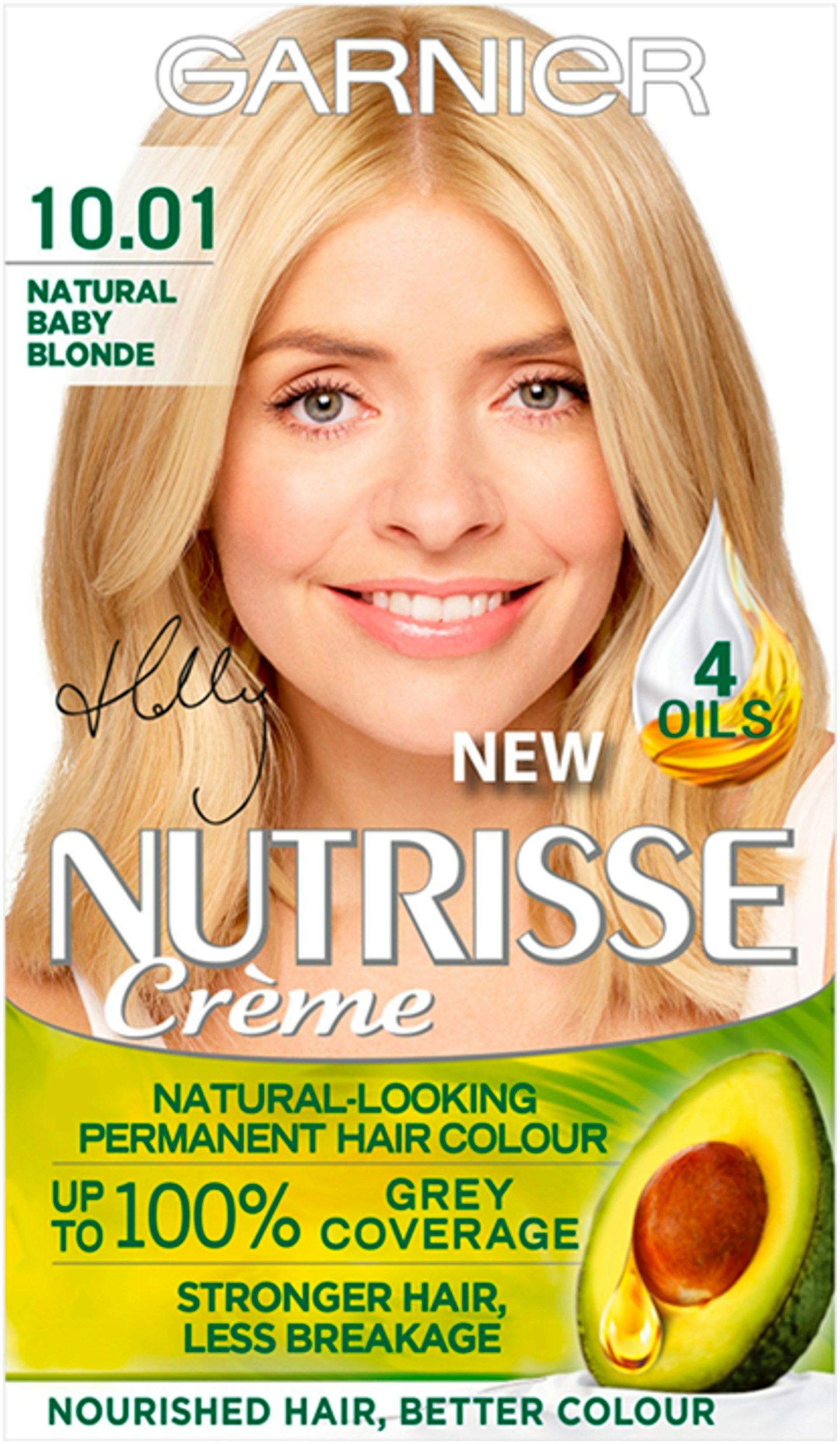 1 of 7
1 of 7Garnier Nutrisse Creme Hair Colour, £5.79
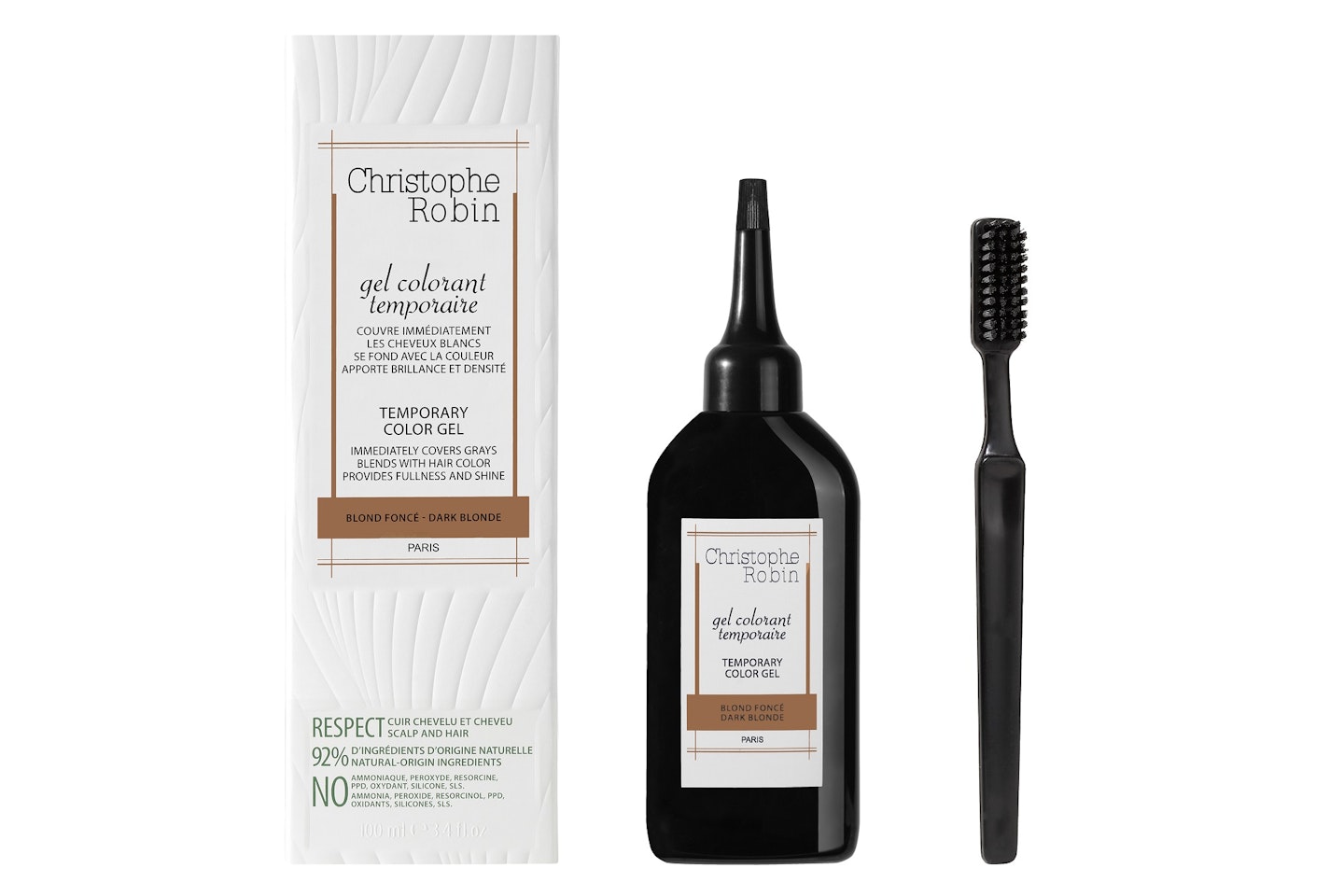 2 of 7
2 of 7Christophe Robin Temporary Colour Gel, £30
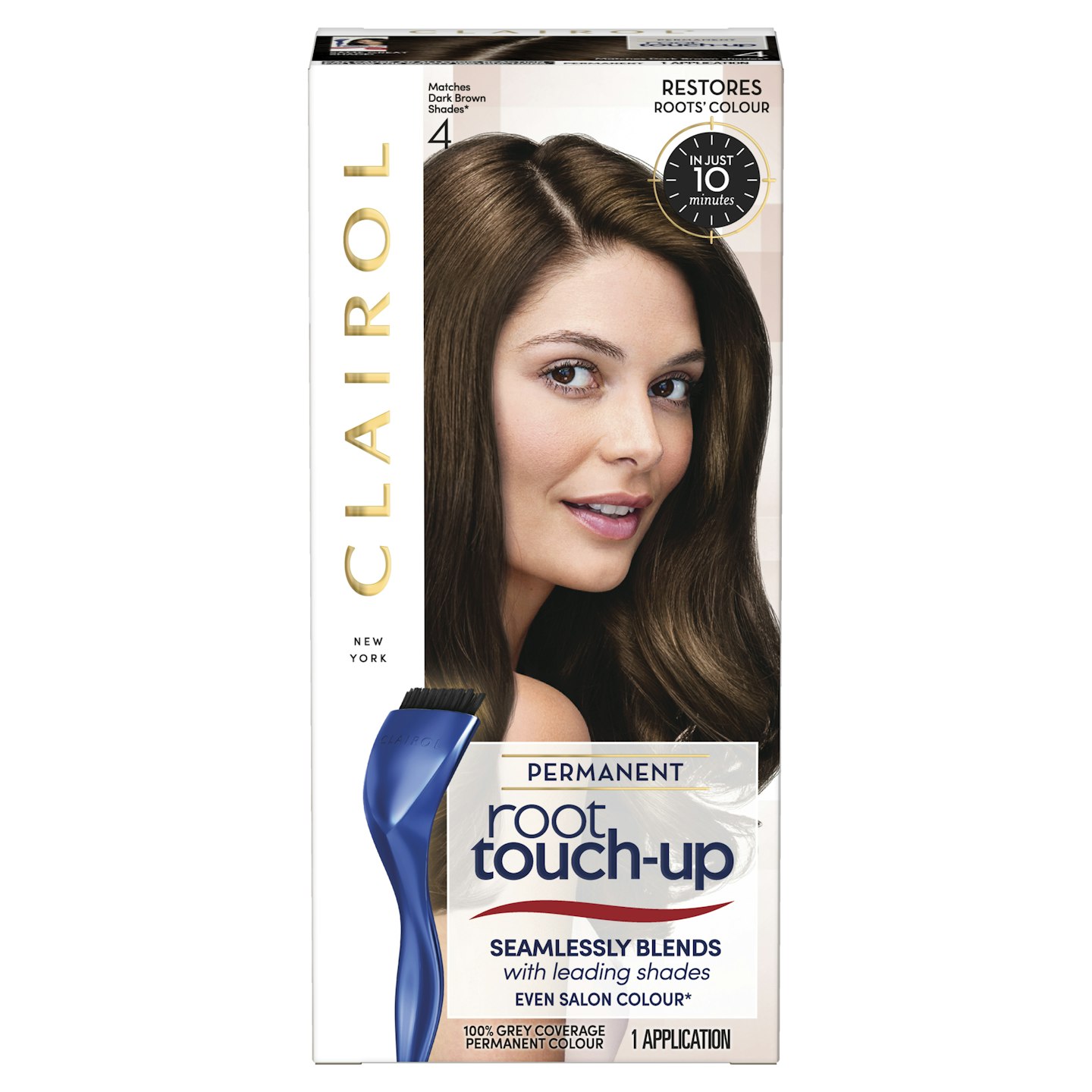 3 of 7
3 of 7Clairon Nice 'n Easy Root Touch-Up, £5.99
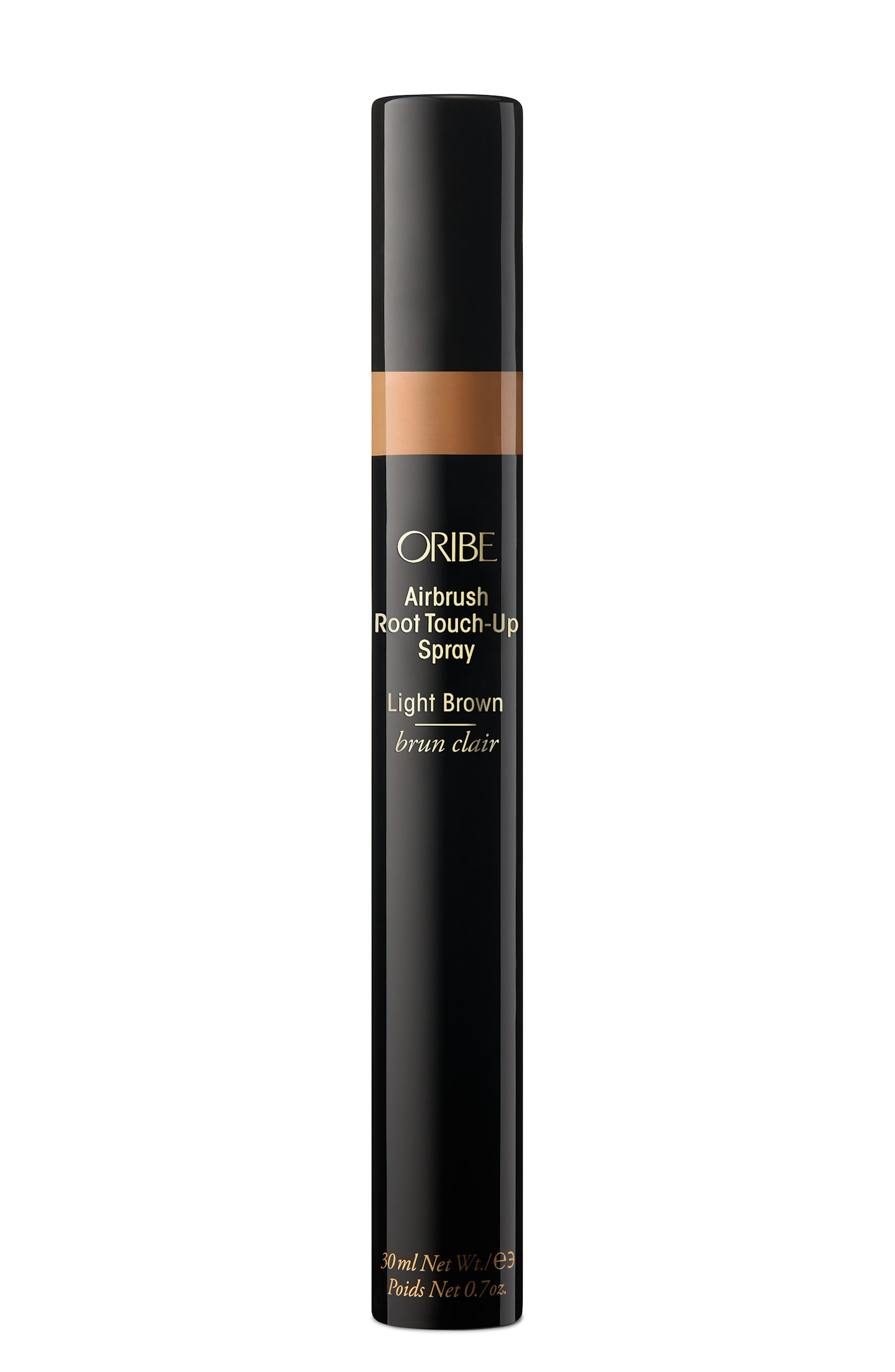 4 of 7
4 of 7Oribe Airbrush Root Touch-Up Spray, £31.50
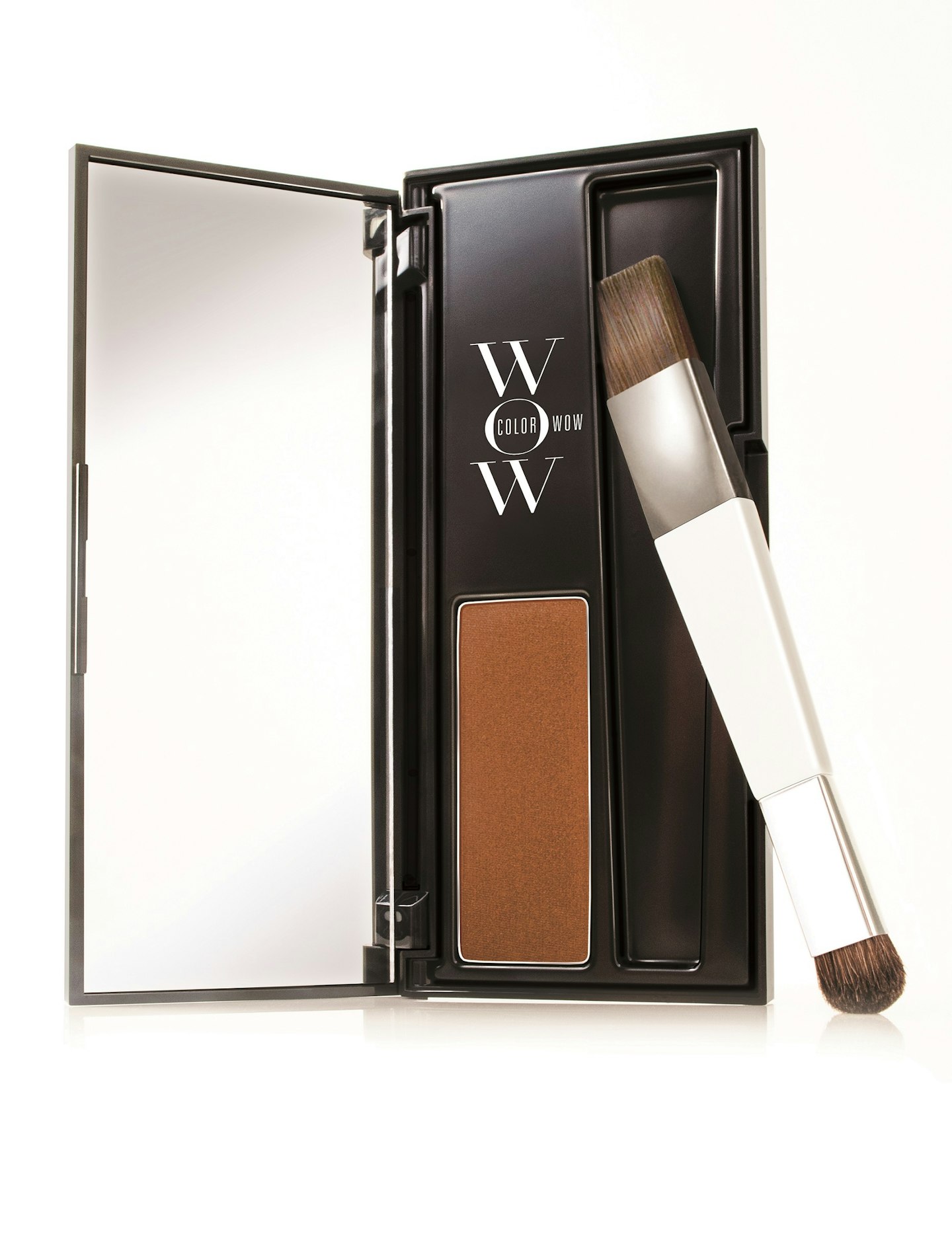 5 of 7
5 of 7Color WOW Root Cover Up, £28.50
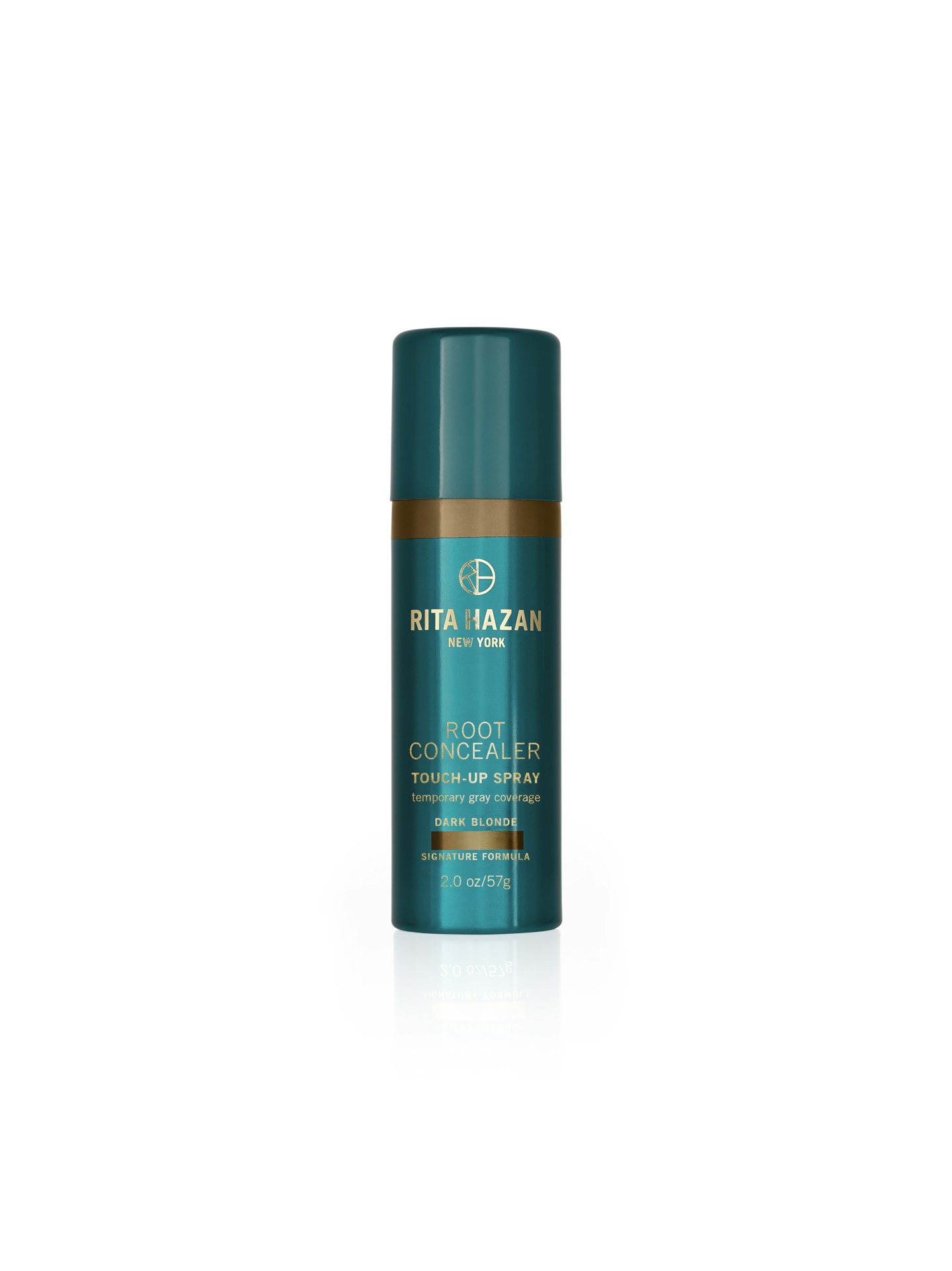 6 of 7
6 of 7Rita Hazan New York Root Concealer Touch Up Spray, £20
.jpg?auto=format&w=1440&q=80) 7 of 7
7 of 7